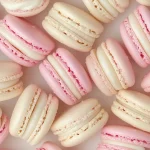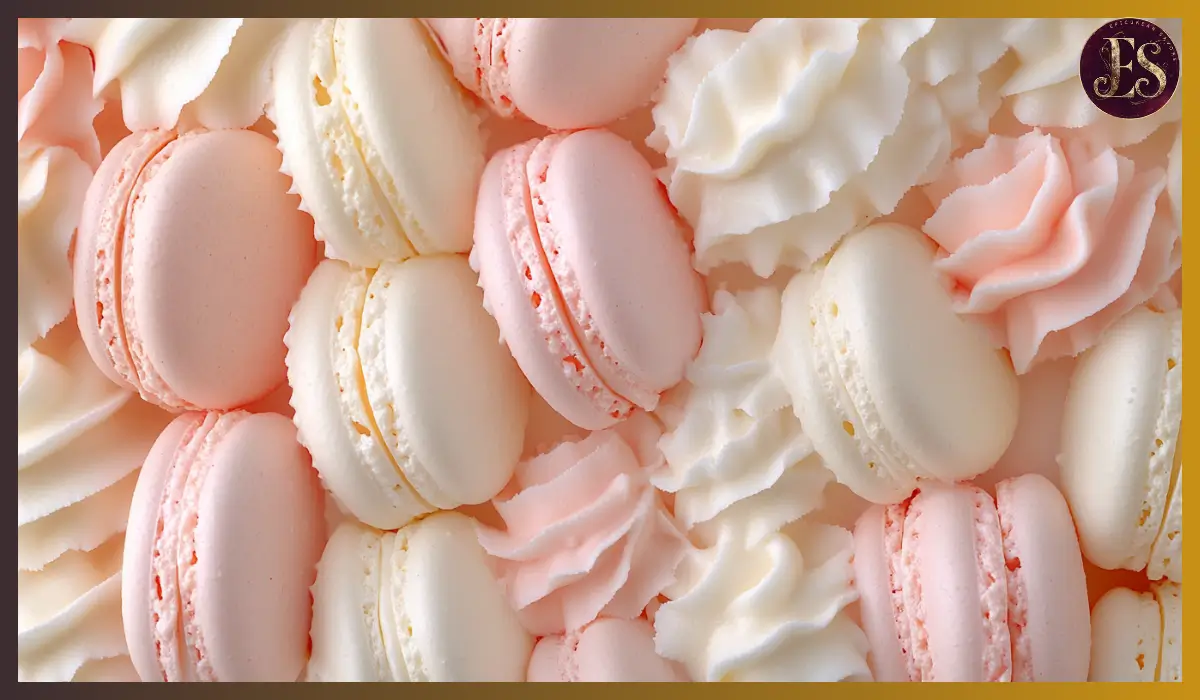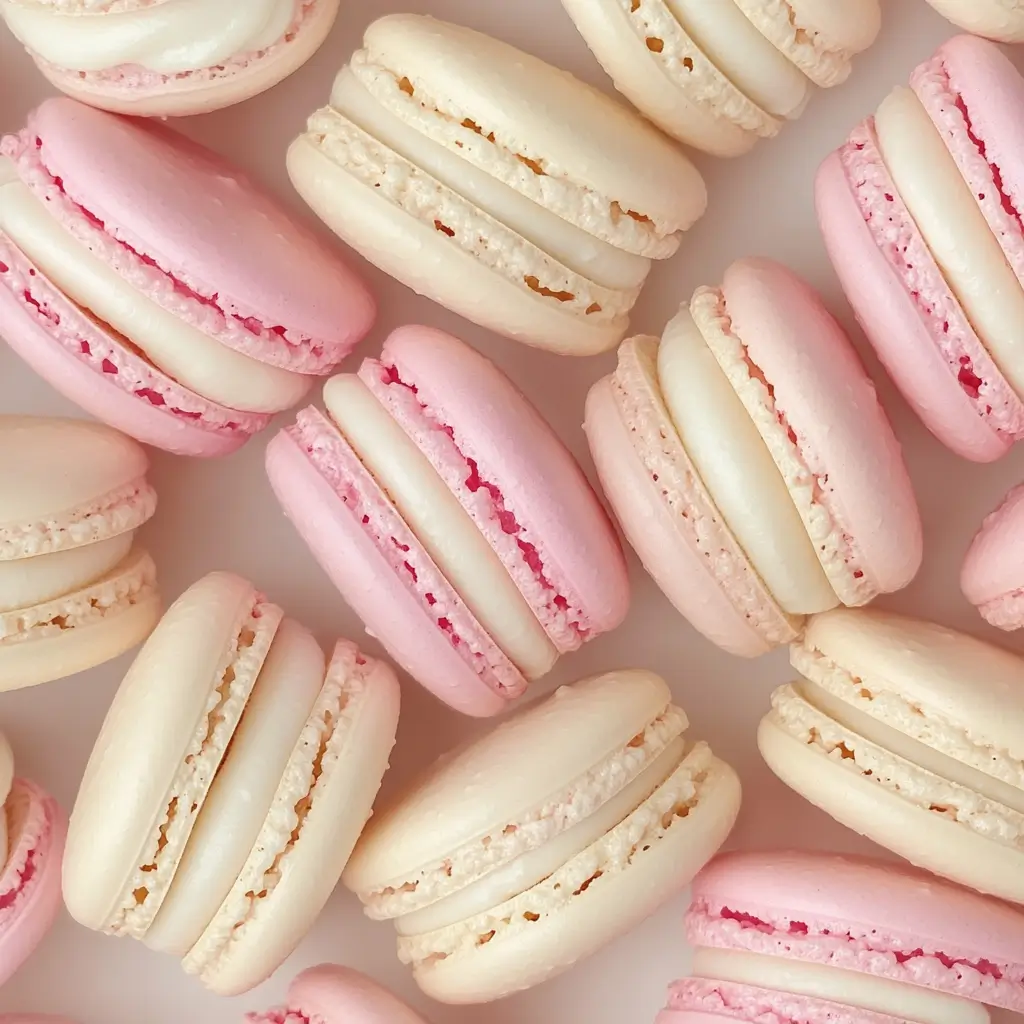There’s something magical about French macarons. These delicate, airy, and slightly chewy cookies have a crisp shell and a deliciously creamy filling that melts in your mouth. They are an elegant treat that can be customized with endless flavors and colors, making them perfect for special occasions or as a fun weekend baking project. However, if you’ve ever tried making macarons, you probably know that they can be a bit tricky. From hollow shells to cracked tops, so many things can go wrong. But don’t worry—this beginner-friendly recipe simplifies the process, breaking it down into easy-to-follow steps while providing essential tips to help you succeed.
I remember the first time I attempted French macarons. I was so excited, thinking they would turn out just like the ones in fancy bakeries. But instead, I ended up with flat, cracked shells that were far from perfect. After many trials, I finally cracked the macaron code—perfecting the meringue, mastering the macaronage, and understanding the importance of resting time. Now, I want to share everything I’ve learned so you can skip the frustration and go straight to making bakery-quality macarons at home.
This recipe follows the French meringue method, which is considered the easiest method for beginners. It requires no boiling sugar or complicated techniques, just simple whipped egg whites, almond flour, and sugar. If you’ve ever been intimidated by French macarons, this is the recipe for you. Follow these steps, trust the process, and you’ll be rewarded with beautiful, smooth macarons with the signature “feet” that make them so special.
Why You’ll Love This Recipe
Making French macarons at home might seem like a challenge, but this recipe makes the process straightforward and achievable, even for beginners. Here’s why you’ll love it:
- Beginner-Friendly: This recipe uses the French meringue method, which is the simplest method for making macarons. No need to worry about hot sugar syrup or candy thermometers.
- Foolproof Instructions: Every step is explained in detail, along with common pitfalls and how to avoid them.
- Customizable Flavors and Colors: You can easily add different flavors and colors to match any occasion.
- Perfect Texture: These macarons have crisp, delicate shells with a chewy, slightly soft center.
- Make-Ahead Friendly: Macarons taste even better after they’ve rested for 24 hours, making them an excellent make-ahead dessert for gatherings.
- Impressively Beautiful: Nothing feels more rewarding than pulling out a tray of beautifully smooth macarons with perfect feet. They look just as good as they taste!
With a little patience and the right technique, you’ll be making professional-quality macarons in no time.
Health Benefits
Macarons may be a sweet indulgence, but they do have some surprising health benefits compared to other desserts.
- Naturally Gluten-Free: Since macarons are made with almond flour instead of wheat flour, they are naturally gluten-free, making them a great dessert option for those with gluten sensitivities.
- High in Protein: Egg whites and almond flour provide a good source of protein, which helps build and repair body tissues.
- Lower in Fat Than Butter-Based Desserts: Unlike cakes and cookies that rely heavily on butter, macaron shells contain little to no fat. The filling does contain butter, but you can always opt for lighter fillings such as fruit curd or whipped ganache.
- Good Source of Vitamin E: Almond flour is rich in vitamin E, a powerful antioxidant that supports skin health and boosts the immune system.
- Smaller Portion, Bigger Satisfaction: Because macarons are naturally rich in flavor, just one or two can satisfy a sweet craving without overindulging.
While macarons should still be enjoyed in moderation, they can be a better choice compared to heavy, butter-laden desserts.
Preparation Time, Servings, and Nutritional Information
- Preparation Time: 30 minutes
- Resting Time: 30-60 minutes
- Baking Time: 15-18 minutes
- Total Time: About 1 hour 30 minutes
- Servings: Makes approximately 20-24 macarons (40-48 shells)
Nutritional Information (per macaron)
- Calories: 100-120 kcal
- Protein: 2g
- Carbohydrates: 14g
- Fat: 5g
- Sugar: 12g
Ingredients List
For the Macaron Shells
- 100g almond flour (super-fine for smooth shells)
- 65g powdered sugar
- 70g egg whites (room temperature)
- 75g granulated sugar
- ¼ tsp cream of tartar (optional, helps stabilize meringue)
- ¼ tsp salt
- Gel food coloring (optional)
For the Filling (Vanilla Buttercream)
- 2 large egg yolks
- ¼ cup granulated sugar
- 3½ tbsp milk
- ½ cup unsalted butter (softened)
- 1 tsp vanilla extract
Step-By-Step Cooking Instructions
1. Prepare the Dry Ingredients
Sift the almond flour and powdered sugar together twice to ensure there are no lumps. This step is essential for achieving smooth macaron shells. Discard any large almond bits left in the sieve.
2. Make the Meringue
In a clean, grease-free mixing bowl, beat the egg whites on medium speed until they become foamy. Add the cream of tartar and salt. Slowly add the granulated sugar, one spoonful at a time, while continuing to beat. Increase the speed and whip until the meringue reaches stiff peaks. The mixture should be thick, glossy, and hold its shape.
3. Macaronage (Mixing the Batter)
Gently fold the sifted dry ingredients into the meringue using a silicone spatula. Use slow, circular motions to incorporate everything without deflating the meringue too much. The batter is ready when it flows like lava and forms ribbons that dissolve into the mixture within 10 seconds.
4. Pipe the Macaron Shells
Transfer the batter into a piping bag fitted with a round tip. Pipe small, even circles onto a parchment-lined baking sheet. Tap the tray on the counter a few times to release any air bubbles. Let the shells rest at room temperature for 30-60 minutes until a dry skin forms on top.
5. Bake the Macarons
Preheat your oven to 300°F (150°C). Bake one tray at a time for 15-18 minutes. The macarons are done when they have firm feet and don’t jiggle when touched. Let them cool completely before removing them from the baking sheet.
6. Make the Buttercream Filling
Whisk the egg yolks and sugar together until pale and thick. Heat the milk in a small saucepan until warm, then gradually whisk it into the egg mixture. Cook over low heat until thickened. Let it cool before beating in the butter and vanilla extract.
7. Assemble the Macarons
Pair the macaron shells by size. Pipe the buttercream onto half of the shells, then gently sandwich them together.
8. Mature the Macarons
For the best flavor and texture, store macarons in an airtight container in the fridge for 24 hours before eating. Bring them to room temperature before serving.
How to Serve
French Macarons can be enjoyed on their own or paired with coffee, tea, or hot chocolate. They make a beautiful addition to dessert tables and gift boxes.
Pairing Suggestions
Macarons pair well with espresso, herbal teas, and fruit sorbets.
Storage, Freezing & Reheating Instructions
Store filled macarons in the fridge for up to 5 days or freeze them for up to a month.
Common Mistakes to Avoid
Overmixing, under-mixing, and improper oven temperature can ruin macarons.
Pro Tips
Use a kitchen scale, aged egg whites, and test your oven temperature for the best results.
Troubleshooting Guide for Perfect French Macarons
French Macarons are known for being tricky, but with the right troubleshooting knowledge, you can avoid common pitfalls and achieve beautiful results. If your macarons are turning out less than perfect, don’t worry—here are some solutions:
- Hollow Shells: This usually happens due to an under-whipped meringue or over-mixed batter. Make sure your meringue reaches stiff peaks, and fold the batter only until it flows like lava.
- Cracked Tops: This is often caused by not allowing the macarons to rest before baking, baking at too high a temperature, or undermixed batter. Let your piped macarons rest until they form a dry skin, and ensure your oven temperature is accurate.
- No Feet: If your macarons bake without feet, it could be due to weak meringue, overly wet batter, or an oven that is too cool. Always whip your meringue properly and avoid over-folding during macaronage.
- Uneven or Lumpy Shells: If your macarons look rough or lumpy, your almond flour and powdered sugar may not have been sifted well enough. Always sift your dry ingredients at least twice for a smooth finish.
By paying attention to these details, you’ll improve your macaron-making skills and get closer to achieving perfect results every time.
Different Filling Ideas to Elevate Your Macarons
While classic buttercream is always a great choice, the filling is where you can truly get creative with flavors and textures. Here are some delicious filling ideas to try:
- Ganache: Made with chocolate and heavy cream, ganache creates a rich and indulgent macaron filling. You can use dark, milk, or white chocolate and infuse it with flavors like coffee, mint, or citrus zest.
- Fruit Curd: Lemon, passion fruit, or raspberry curd adds a bright, tangy contrast to the sweetness of macaron shells. These fillings pair especially well with nutty or vanilla-flavored shells.
- Cream Cheese Frosting: A slightly tangy alternative to buttercream, cream cheese frosting is perfect for red velvet or carrot cake-inspired macarons.
- Salted Caramel: Sweet, sticky, and slightly salty caramel makes for a decadent macaron filling that balances sweetness with a hint of salt.
- Whipped White Chocolate Mousse: For a lighter alternative, whipped chocolate mousse offers a fluffy, airy texture that’s perfect for delicate flavors like lavender or Earl Grey.
By experimenting with different fillings, you can create unique flavor combinations that elevate your macarons to a whole new level.
How to Achieve Perfectly Colored French Macarons
Macarons are as much about aesthetics as they are about flavor, and getting the right color is crucial. However, improper coloring techniques can affect the texture of your shells. Here’s how to achieve the best results:
- Use Gel or Powdered Food Coloring: Liquid food coloring can alter the consistency of your batter, making it too runny. Stick with gel or powdered food coloring for vibrant hues without excess moisture.
- Add Coloring at the Right Time: The best time to add color is when your egg whites reach soft peaks during the meringue stage. This ensures even distribution without over-mixing the batter later.
- Go Slightly Darker Than Your Target Shade: Colors tend to fade slightly during baking, so aim for a shade darker than your final desired color.
- Avoid Over-Mixing: Mixing in color can lead to overworked batter. Be mindful of how much you mix after adding color to maintain the right macaronage consistency.
- Use Natural Colors for a Healthier Alternative: If you prefer natural options, try matcha powder for green, beetroot powder for pink, or cocoa powder for brown. These not only add color but also subtle flavors.
By following these tips, you can achieve beautifully colored macarons that look just as amazing as they taste.
How Weather and Humidity Affect Macaron Success
Macarons are extremely sensitive to environmental factors, and weather can have a major impact on your baking results. If you’re struggling with inconsistent results, consider how humidity and temperature might be affecting your process.
- High Humidity: If the air is too humid, macarons may not develop a dry skin during the resting phase, leading to cracked shells. To prevent this, run a dehumidifier in your kitchen or use an air-conditioned space.
- Cold, Dry Weather: In contrast, extremely dry air can make your macarons brittle. If your shells are too dry and crack easily, consider reducing the resting time slightly.
- Temperature Fluctuations: If your kitchen is too hot or drafty, it can affect how your meringue whips up and how the shells bake. Try to bake in a controlled, stable environment.
- Oven Variability: Some ovens have hot spots or inconsistent temperatures. Use an oven thermometer to ensure accuracy, and rotate your trays halfway through baking for even results.
Understanding how weather impacts your baking will help you adjust your technique and improve consistency. If you’re experiencing macaron issues, take note of the climate and tweak your approach accordingly.
Frequently Asked Questions (FAQs)
1. Can I make macarons without almond flour?
Traditional macarons require almond flour, but if you have nut allergies, you can substitute sunflower seed flour or finely ground pumpkin seeds. However, this may slightly alter the flavor and texture.
2. How do I know if my meringue is properly whipped?
Your meringue is ready when it reaches stiff peaks. It should be glossy, hold its shape, and not slide off the whisk when turned upside down. If it’s grainy or dry, it’s over-whipped.
3. Why did my macarons crack in the oven?
Cracked macarons usually result from skipping the resting phase, an oven that’s too hot, or undermixed batter. Ensure your macarons have developed a dry skin before baking and check your oven temperature.
4. How do I fix hollow macarons?
Hollow shells are caused by weak meringue, over-mixed batter, or under-baking. Whip your meringue to stiff peaks, fold the batter carefully, and bake at the correct temperature for the full time.
5. Can I store macaron batter for later use?
It’s best to pipe macarons immediately after mixing the batter. Letting it sit too long can cause the mixture to deflate, leading to poor results.
Conclusion & Call to Action
Try this recipe and share your results! Let me know how your French macarons turn out.
Print
Easy French Macaron
- Total Time: About 1 hour 30 minutes
- Yield: 20-24 macarons 1x
- Diet: Gluten Free
Description
A foolproof French macaron recipe for beginners using the simple French meringue method. Achieve delicate, smooth shells with perfect feet every time!
Ingredients
- 100g almond flour
- 65g powdered sugar
- 70g egg whites (room temperature)
- 75g granulated sugar
- ¼ tsp cream of tartar (optional)
- ¼ tsp salt
- Gel food coloring (optional)
Filling (Vanilla Buttercream):
- 2 egg yolks
- ¼ cup granulated sugar
- 3½ tbsp milk
- ½ cup unsalted butter (softened)
- 1 tsp vanilla extract
Instructions
- Sift almond flour and powdered sugar twice.
- Make the meringue by whipping egg whites with granulated sugar until stiff peaks form.
- Macaronage: Gently fold dry ingredients into the meringue until the batter flows like lava.
- Pipe macaron rounds onto a lined baking sheet and tap the tray to remove air bubbles.
- Rest the shells until a dry skin forms (30-60 minutes).
- Bake at 300°F (150°C) for 15-18 minutes.
- Make the filling by whisking egg yolks, sugar, and milk over low heat until thickened, then mix in butter and vanilla.
- Assemble macarons by piping filling onto half the shells and sandwiching them together.
- Mature for 24 hours in the fridge for best texture and flavor.
Notes
- Ensure egg whites are at room temperature for the best meringue.
- Avoid overmixing the batter to prevent flat shells.
- Let macarons rest fully before baking to prevent cracks.
- Prep Time: 30 minutes
- Cook Time: 15-18 minutes
- Category: Dessert
- Method: Baking
- Cuisine: French


